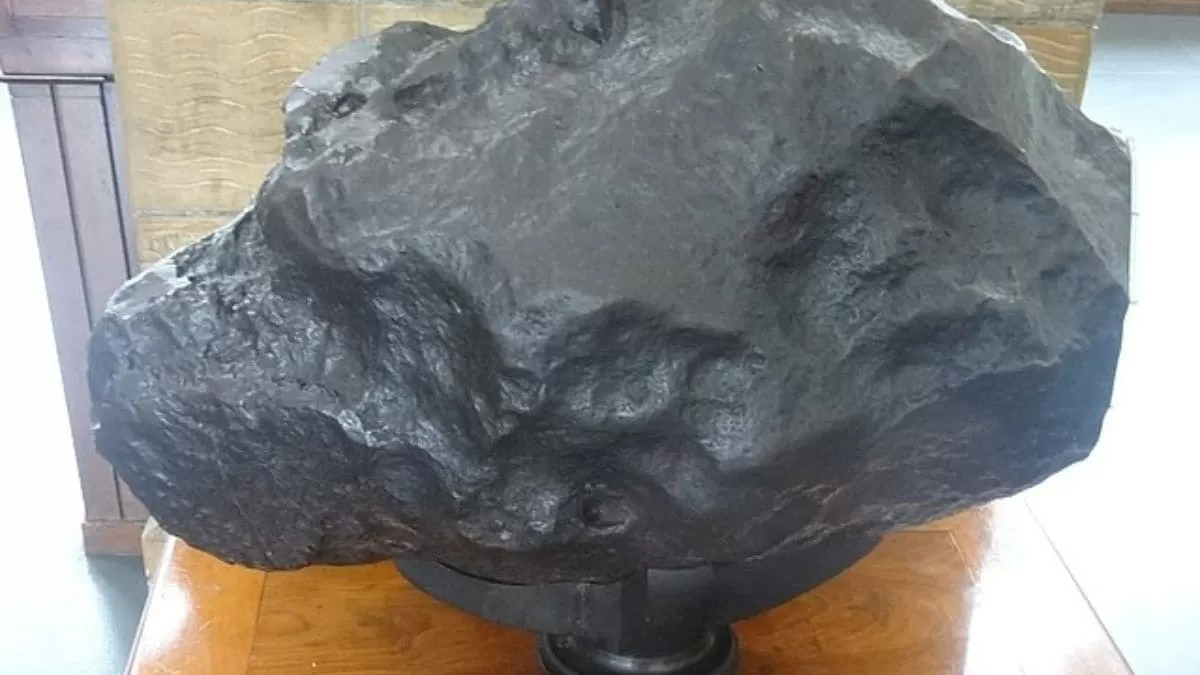Recent research on Iron Age artifacts from Poland has revealed an exciting discovery – the presence of meteoric iron in several ornaments. This groundbreaking study, published in the Journal of Archaeological Science: Reports, has shed new light on the use of meteorite material in ancient cultures and has challenged previous assumptions about the source of iron in these artifacts.
The study, led by Dr. Anna Wawrzyniak and her team from the Institute of Archaeology at the University of Warsaw, focused on 26 objects from Lusatian Culture sites in Poland. The Lusatian Culture, which flourished in the region between 1300 and 500 BC, is known for its rich and intricate metalwork, particularly in iron. However, the source of this iron has long been a subject of debate among archaeologists.
Using a combination of non-destructive and destructive analytical techniques, the researchers were able to identify the composition of the iron in these artifacts. The results were astonishing – four of the objects were found to contain ataxite meteorite material, a type of iron that is only found in meteorites.
This discovery has significant implications for our understanding of the Iron Age in Poland. It challenges the long-held belief that the iron used in these artifacts was imported from other regions. Instead, the study suggests that the ancient people of the Lusatian Culture were able to locally source and utilize meteoric iron, a feat that was previously thought to be beyond their technological capabilities.
Dr. Wawrzyniak and her team believe that this discovery could also have wider implications for our understanding of ancient metalworking techniques. The use of meteoric iron in these artifacts suggests a level of sophistication and knowledge that was previously underestimated. It also raises questions about the role of meteorites in ancient cultures and their significance in the development of human societies.
The presence of meteoric iron in these artifacts also adds a new layer of mystery and wonder to the already fascinating world of archaeology. The idea that these objects, which have been studied and admired for centuries, have a connection to the stars is truly awe-inspiring.
But how did the ancient people of the Lusatian Culture acquire this meteoric iron? The researchers suggest that they may have used a technique called ‘cold hammering’, where meteorite fragments are pounded into shape without the need for smelting. This technique was previously thought to have been developed much later in human history, but this discovery challenges that notion.
The study also highlights the importance of using advanced analytical techniques in archaeology. Non-destructive methods, such as portable X-ray fluorescence (pXRF), allowed the researchers to quickly and efficiently analyze the objects without causing any damage. This is crucial in preserving these valuable artifacts for future generations.
The discovery of meteoric iron in these Iron Age artifacts from Poland is a testament to the power of scientific research and its ability to uncover new information about our past. It also serves as a reminder that there is still so much to learn about ancient cultures and their technological achievements.
The study has already garnered attention from the international archaeological community, with experts praising its significance and potential impact on our understanding of the Iron Age. Dr. Wawrzyniak and her team are now planning to expand their research to other regions and cultures to see if the use of meteoric iron was a widespread practice in ancient times.
In conclusion, the recent research on Iron Age artifacts from Poland has revealed a groundbreaking discovery – the use of meteoric iron in several ornaments. This discovery challenges previous assumptions about the source of iron in these artifacts and sheds new light on the technological capabilities of the ancient people of the Lusatian Culture. It also highlights the importance of using advanced analytical techniques in archaeology and the endless possibilities for new discoveries in the field. This study is a testament to the power of scientific research and its ability to uncover the mysteries of our past.

